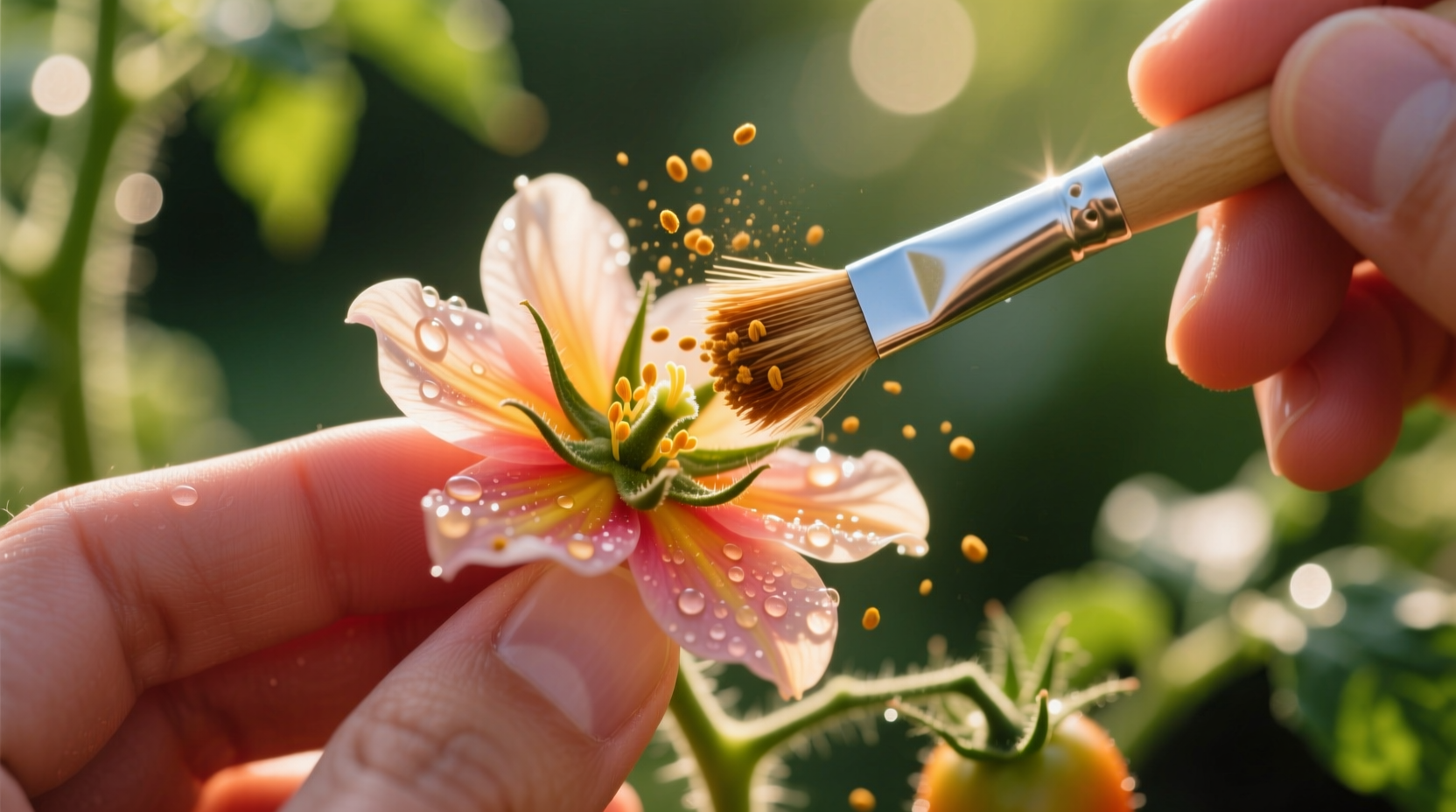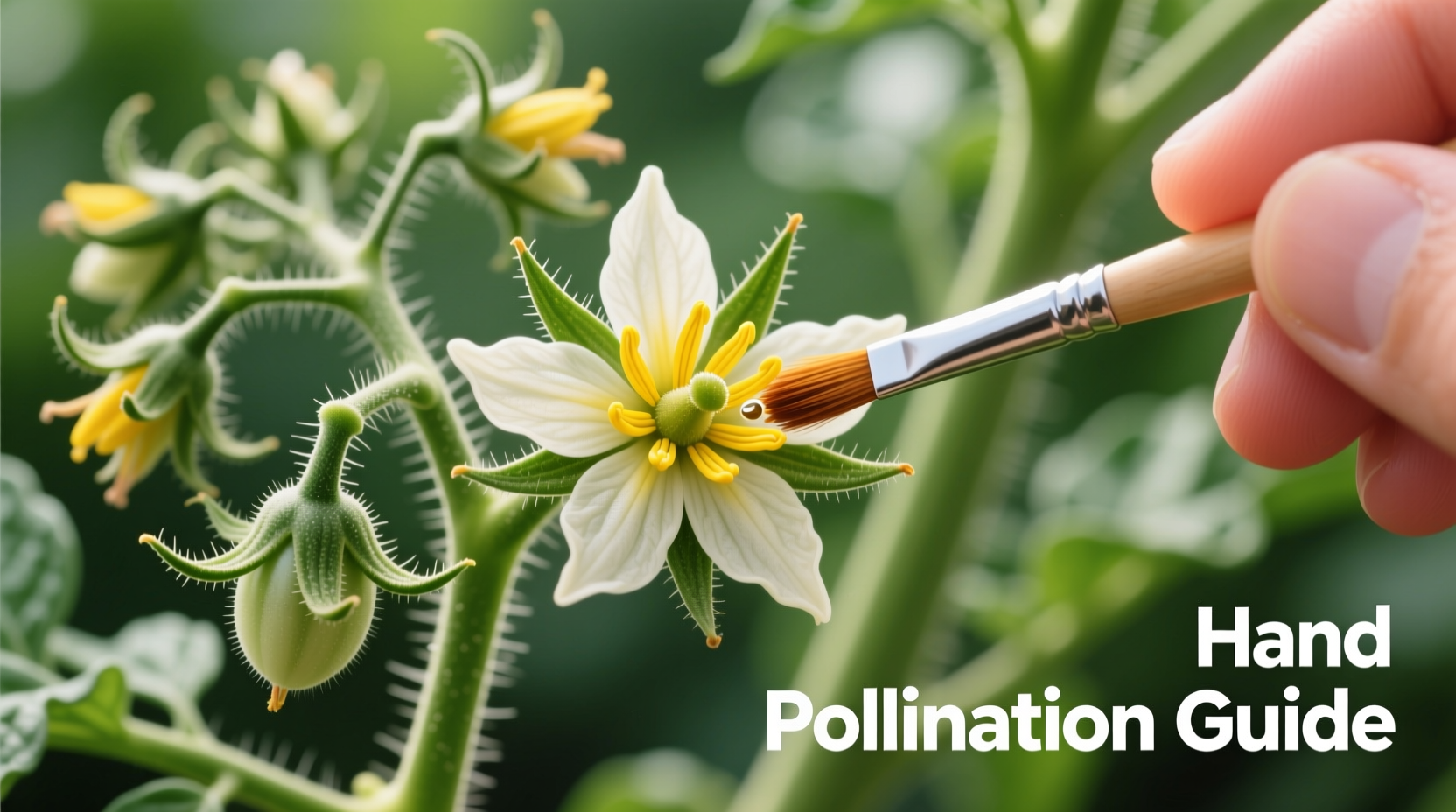Manually pollinating tomato plants boosts fruit production by 30-50% when natural pollinators are scarce. Use a soft brush or vibrating tool on open flowers between 10 AM-2 PM when pollen is most viable for best results.
Tomato growers often wonder why their plants flower but fail to produce fruit. The answer frequently lies in inadequate pollination. While tomatoes are technically self-pollinating, modern greenhouse varieties and certain environmental conditions require human intervention to maximize yields. This guide reveals proven techniques that home gardeners can implement immediately to transform their tomato harvests.
Why Tomatoes Need Your Pollination Help
Natural pollination occurs when wind or insects shake tomato flowers, releasing pollen from the anthers onto the stigma. However, many gardeners face challenges that disrupt this process:
- Indoor or greenhouse growing limits insect access
- Extreme temperatures (above 90°F or below 55°F) reduce pollen viability
- High humidity causes pollen to clump
- Low wind conditions in sheltered gardens
According to research from the University of California Agriculture and Natural Resources, hand-pollinated tomato plants produce 30-50% more fruit than those relying solely on natural methods in controlled environments. The key is understanding when and how to intervene effectively.
Recognizing Pollination-Ready Flowers
Timing is critical for successful pollination. Look for these visual indicators that flowers are ready:
- Yellow petals fully opened (not curled inward)
- Central stigma protruding slightly from the anther cone
- Morning dew has evaporated (pollinate between 10 AM-2 PM)
- Flowers have been open for 1-2 days
Tomato flowers remain receptive for approximately 2 days after opening. Pollinating too early (when petals are still curling back) or too late (when petals begin wilting) significantly reduces success rates. The optimal window aligns with peak pollen viability during mid-morning when humidity levels drop.
| Pollination Method | Success Rate | Time Required | Best For |
|---|---|---|---|
| Electric toothbrush | 85-90% | 5-10 seconds per flower | Indoor/greenhouse plants |
| Soft brush technique | 75-80% | 15-20 seconds per flower | Outdoor container plants |
| Natural enhancement | 60-70% | Minimal maintenance | Garden beds with pollinator access |
Three Proven Pollination Techniques
1. The Electric Toothbrush Method (Most Effective)
This technique mimics the "buzz pollination" performed by bees:
- Select a clean, battery-powered toothbrush
- Hold the vibrating head against the flower's anther cone
- Maintain contact for 5-10 seconds until pollen visibly releases
- Move to the next flower without cleaning the brush
Cornell University's Cooperative Extension confirms this method achieves near-natural pollination rates by properly agitating the anther cone to release pollen. The vibration frequency closely matches that of pollinating bees, making it particularly effective for greenhouse tomatoes.
2. Soft Brush Pollination (Best for Outdoor Gardens)
When insects are scarce but some natural pollination occurs:
- Use a small watercolor brush or cotton swab
- Gently swirl inside the flower to collect pollen from anthers
- Transfer pollen to the central stigma in a circular motion
- Repeat for 3-4 flowers before refreshing your brush
This method works particularly well during periods of high humidity when pollen tends to clump. The physical transfer ensures adequate pollen reaches the stigma even when environmental conditions would normally prevent successful pollination.
3. Natural Pollination Enhancement
For gardeners preferring minimal intervention:
- Place oscillating fans near indoor plants at low setting
- Plant pollinator-friendly flowers like marigolds nearby
- Gently shake plant stems early morning (avoid during peak heat)
- Maintain 40-70% humidity levels in greenhouses
Texas A&M AgriLife Extension research shows that strategic fan placement in greenhouses increases fruit set by 25% compared to static environments. The gentle air movement effectively replaces natural wind pollination without damaging delicate flowers.
Pollination Timeline: What to Expect After Treatment
| Time After Pollination | Visible Changes | Action Required |
|---|---|---|
| 24-48 hours | Petals begin wilting | None - indicates successful pollination |
| 3-5 days | Small green fruit forms at flower base | Monitor for proper development |
| 7-10 days | Flower completely drops off | Continue regular care |
| 14+ days | Fruit visibly growing | Support developing fruit with cages |
Common Pollination Mistakes to Avoid
Even experienced gardeners make these critical errors:
- Pollinating too early - Flowers need 24 hours after fully opening
- Using excessive force - Damages delicate flower structures
- Pollinating during midday heat - High temperatures reduce pollen viability
- Cleaning tools between flowers - Prevents natural pollen transfer
- Overlooking humidity levels - Above 70% humidity causes pollen clumping
According to horticultural studies, the most successful gardeners pollinate every 2-3 days during peak flowering season rather than daily. This frequency aligns with the natural flower development cycle while conserving gardener effort.
Troubleshooting Poor Fruit Set
If you're pollinating correctly but still seeing few tomatoes, consider these factors:
- Nutrient imbalance - Excess nitrogen promotes foliage over fruit
- Temperature extremes - Night temps below 55°F or day temps above 90°F
- Water stress - Inconsistent watering during flowering
- Variety selection - Some heirloom varieties naturally set less fruit
When environmental conditions prevent successful pollination (like extreme heat waves), consider temporary shade cloth to lower temperatures. The University of California recommends maintaining daytime temperatures between 70-85°F for optimal tomato fruit set.

Maximizing Your Tomato Harvest Through Proper Pollination
Consistent, timely pollination transforms tomato production. By implementing these techniques during your plants' flowering period, you'll notice:
- Earlier fruit development by 5-7 days
- 30-50% increase in total harvest
- Larger, more uniform fruit size
- Reduced blossom drop during suboptimal conditions
Remember that pollination is just one component of successful tomato growing. Combine these techniques with proper watering, appropriate fertilization, and disease prevention for the best results. The effort you invest in pollination now will pay off with abundant, homegrown tomatoes throughout the season.











 浙公网安备
33010002000092号
浙公网安备
33010002000092号 浙B2-20120091-4
浙B2-20120091-4